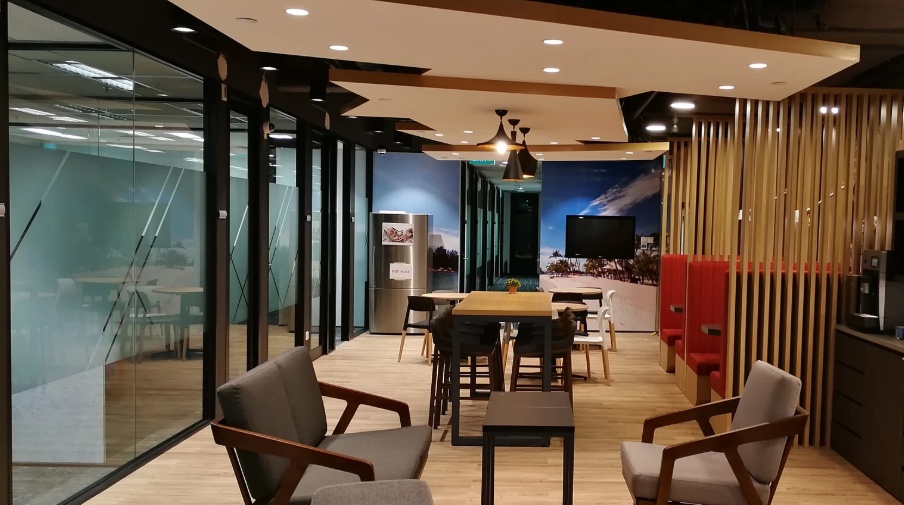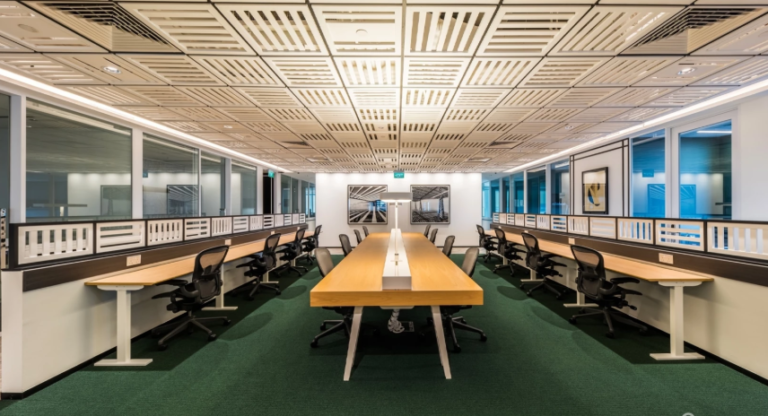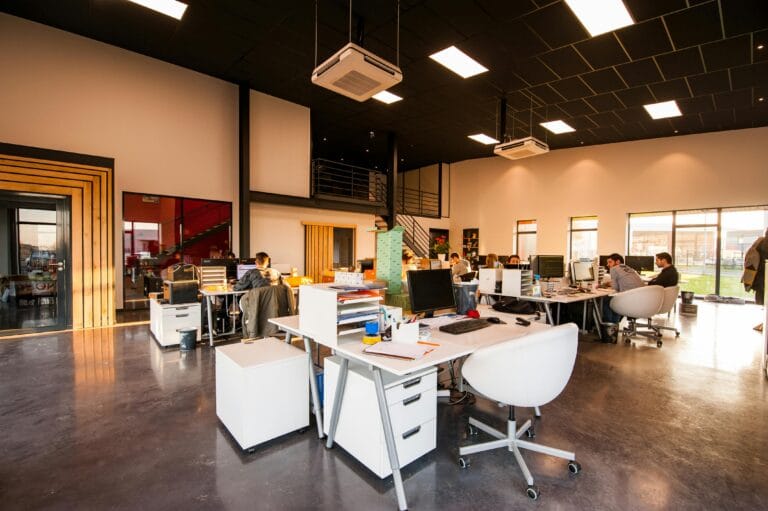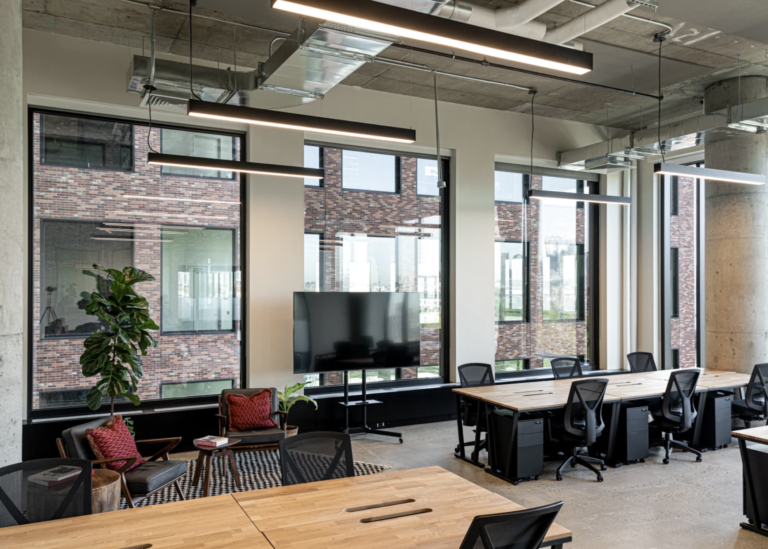The Great HDB Sublease Loophole: SMEs Renting State-Subsidized Industrial Spaces for AI Server Farms
A Data Center in Disguise
On the outside, it looks like any other unit in a Housing & Development Board (HDB) industrial estate. But step inside and you’ll hear the electric hum of servers hard at work. What was meant for a woodworking shop or metal workshop is now a mini data center. Small and medium enterprises (SMEs) in Singapore have discovered a clever loophole: renting low-cost, government-subsidized HDB industrial spaces and repurposing them for high-tech operations like AI server farms. These units come with bargain rents intended to spur light manufacturing and trades, yet some tech-savvy firms are using them to run racks of computers for intensive AI projects.
Loopholes and Light Industrial Limits
This subleasing scheme exploits a grey area in policy. HDB industrial units are meant for light industrial or production use, not conventional offices or data centers. By rule, most of the floor area in such spaces must be used for actual industrial work, with only a small portion for ancillary office uses. However, enterprising companies skirt these rules by classifying their server farms as “research and development” or as an integral part of a manufacturing process. In other cases, firms quietly sublet these units from the originally approved tenants, creating an informal market for cheap, clandestine tech hubs. The result is an underground ecosystem of AI startups and IT contractors running critical infrastructure out of locations never intended for such equipment.
The appeal is obvious. Rents for HDB industrial units are a fraction of commercial office or data center rates. A downtown office can cost many times more per square foot than an industrial unit on the city’s fringes. By operating in a subsidized factory space, an SME can save massively on overhead – often the difference between a feasible operation and a failed one. As one entrepreneur put it, “Why pay Orchard Road prices for server space when industrial estate rates will do?” The cost gap is especially tempting for AI ventures, which need expensive hardware and lots of electricity. Every dollar saved on rent is a dollar that can go into GPUs and engineers instead.
An Evolving Workspace Landscape
This trend is part of a broader shift in Singapore’s flexible leasing landscape. In the wake of the pandemic, many businesses downsized their main offices and sought more agile, short-term premises. Long leases in prime office towers have given way to month-by-month coworking arrangements and satellite offices in cheaper locations. Even industrial landlords have started offering shorter, adaptable leases to attract tenants, blurring the line between traditional office and industrial space. The lines between what is “office” versus “industrial” are not as clear as before.
At the same time, the rise of hybrid work – employees splitting time between home and office – has changed what companies need from real estate. Businesses now require less conventional office space and more specialized or budget-friendly outposts. A company might keep a small city-center suite for client meetings, while housing back-end operations (like IT support or servers) in a light-industrial unit further out. This “hub-and-spoke” model of offices means companies are willing to put certain functions in non-traditional locations. Flexible workspace operators have noted a surge in demand not just for downtown desks, but also for facilities in business parks and industrial estates where costs are lower. In short, if the price is right and the space is workable, companies are getting creative with where they set up shop.
It’s a trend seen across Asia-Pacific. Research by JLL found that flexible workspace (like serviced offices and coworking centers) in the region surged 150% from 2014 to 2017 (Coworking – Wikipedia), reflecting how quickly companies are embracing new ways to use space. Singapore, with its limited land and high rents, has been at the forefront of this evolution.
Platforms to the Rescue
Navigating this shifting market can be tricky, which is where online platforms like MatchOffice come in. MatchOffice and similar services act as portals for finding flexible work environments – whether it’s a desk in a co-working hub, a small office, or an industrial unit available for sublease. These platforms have been quick to adapt to the new normal, listing a variety of spaces that cater to hybrid needs and connecting SMEs with landlords willing to think outside the box.
For example, a tech startup might use such a platform to find an affordable industrial unit to house both a prototyping lab and some server racks, without committing to a multi-year lease. Instead of spending months negotiating a traditional rental, they could secure a short-term agreement through the platform, sometimes with basic infrastructure (like air-conditioning or high-speed internet) already in place. MatchOffice reports that more companies are searching for these non-traditional setups, reflecting how mainstream the flexible-space trend has become. In essence, platforms are bridging the gap by matching unique supply with the growing demand for affordable, unconventional workspaces.
Balancing Cost and Regulation
The HDB sublease loophole highlights the tough quest for affordable space in Singapore. SMEs form the backbone of the economy, but they consistently cite rent as one of their biggest challenges. When entrepreneurs resort to converting subsidized workshops into data centers, it’s a sign that standard options are not keeping up with their needs. The ingenuity here – repurposing space on the sly – shows how resourceful businesses can be when pressed. It also raises some regulatory eyebrows. Are these makeshift server farms adhering to fire safety and zoning rules meant for industrial sites? Are genuine small manufacturers being edged out by tech firms grabbing up cheap units for other uses?
So far, authorities have mostly taken a cautious, watch-and-see approach. There’s an understanding that businesses need flexibility, especially in a fast-evolving digital economy. But there are also hints that regulators may update guidelines to close this loophole, ensuring subsidized spaces are used as intended. HDB and urban planning agencies could tighten enforcement, maybe by more strictly defining what counts as “industrial” use or by cracking down on unauthorized subletting. Industry groups, meanwhile, are urging more support for startups in finding appropriate, affordable facilities – so that innovation isn’t forced to hide in the shadows of semi-legal arrangements.
Ultimately, the sight of AI server farms humming away in HDB units underscores how work and space are being reinvented in the modern economy. It’s a story of rules lagging behind reality: policies made for an older industrial model are being stretched by today’s tech-driven needs. Singapore’s challenge now is to encourage this kind of innovation and flexibility in how space is used – the very thing that helps new ideas flourish – while keeping it within fair and safe bounds. Striking that balance between cost-saving creativity and proper regulation will be key to sustaining the nation’s vibrant, ever-evolving business ecosystem.






